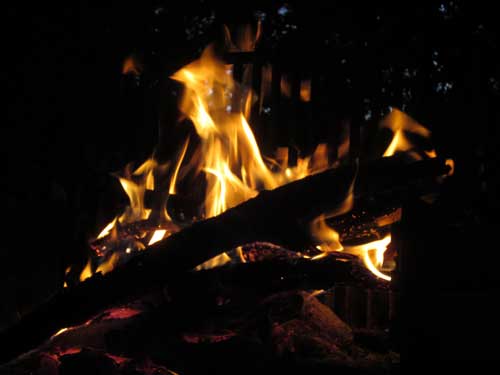We returned to the campsite and I took a 3-mile round trip stroll through Bonita Canyon on the Silver Spur-Faraway Trail to some historic sites. It was very pleasant in the low, late afternoon sun.
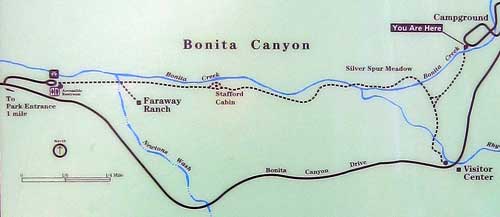
Click for a larger view
In the 1500's, the Apache migrated to this area.
The first non-native settlement in the canyon was the Stafford Homestead in 1879. Ja Hu Stafford (1834 - 1913) was a significant pioneer in the area. Over time, there have been many spellings of his name... Jay Hugh, J. Hugh, and Jehu (the earliest recorded spelling).
In 1885 - 86, the 10th Cavalry established a temporary camp as part of a last campaign to capture Geronimo.
In 1887, Neil Erickson and Emma Sophia Peterson (both Swedish immigrants) built the Erickson Ranch which gradually took over smaller homesteads in the canyon. They planted fruit trees and raised cattle.
In 1917, Niel had to relocate for his job as a district forest ranger. So he left everything to his oldest child, Lillian. She expanded into tourism... providing accommodations and renting horses to tourists to explore the area. In 1923, she married Ed Riggs. She managed the operations at home while he worked for the newly-formed national monument. He passed away in 1950 but she continued to run it until her death in 1977. It was purchased by the National Park Service in 1978.
In 1924, the monument was created. 10 year later, the Civilian Conservation Corp camped in this valley to build an infrastructure of trails and roads.

Ooohhh.... coatimundis and javelinas! How exciting!



It was late November and fall had defnitely... fallen.
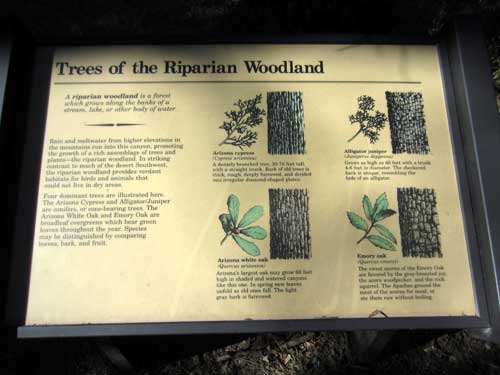
The four main trees in this area are the Arizona Cypress, the Alligator Juniper, the Arizona White Oak and the Emory Oak.

The Alligator Juniper is so named because its bark looks like alligator skin.
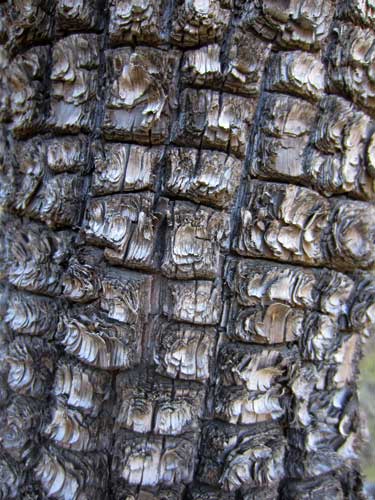
I arrived at Silver Spur Meadow... the first historic site.
Here in 1934 stood Camp NM-2-A, home of Company 828 of the Civilian Conservation Corp (or CCC), a federal agency created by President Franklin D. Roosevelt in an attempt to solve the hardships of the Great Depression. 180 people, mostly from Texas and Arizona, came here to build roads, trails and buildings in Chiricahua National Monument and Coronado National Forest. The camp contained a mess hall, infirmary, workshops, storage buildings and barracks. After it closed in 1940, most of the buildings were torn down, and in 1964, this property became part of the national monument.




The men could learn a trade or how to read and write. They could visit the library (pictured here), play baseball, watch films or attend dances in town.

Displaying the signs that will line the trails
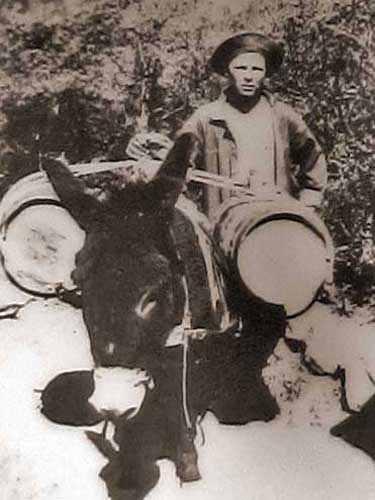
Much of the road and trail work was done with hand tools. Pack burros aided crews by carrying heavy loads to remote areas.



This was all Chiricahua Apache territory in the mid-1800's. In 1886, they were relocated to Florida and later to Oklahoma.
There was hardly anyone else out. Aside from the rustling of the leaves in the wind, there was barley a sound.


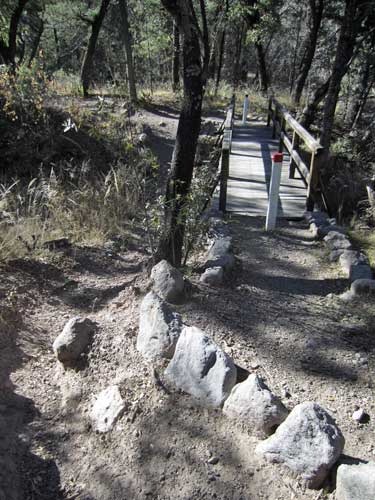
Apparently Bonita Creek was dry at the moment.
The next historic stop was the Stafford Cabin. Ja Hu and his young wife Pauline built this cabin using logs cut farther up the canyon. It underwent several additions as the family grew. An earthquake in 1887 knocked down the chimney. Ja Hu lived here until his death in 1913. In 1918, the Ericksons purchased the cabin and renovated it for their ranch guests.
It was his horse that Big Foot Massai stole in 1890. The horse was eventually recaptured by the army and returned to Ja Hu later that year.



The cabin around 1898. Ja Hu (on roof) and his children
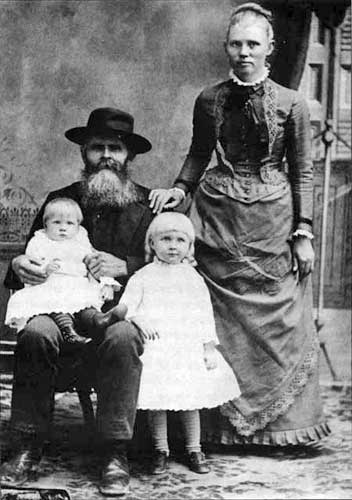
Ja Hu, Pauline, Pansy (standing), Anna Mae (seated)
According to a family story, Ja Hu met 12-year-old Pauline Madsen in the spring of 1880 as she herded cattle barefoot and came to his cabin to get warm. By summer, they were married (he was 46). Pauline became pregnant within a few years of settling at Bonita Canyon, but the child died in childbirth. They went on to have 5 more children. The family was poor, having a double burden of many children and limited opportunities for income. Pauline died in childbirth in 1894 at the age of 28 with their seventh child; the newborn baby died a few months later. Ja Hu continued living at the cabin, getting help from neighbors to raise the kids.
In 1898, Stafford ordered a mail-order bride from Missouri. But when she found herself faced with a 62-year-old widower with five children, all living in a 2-room log cabin on the edge of nowhere, she soon returned to her home state.

It was a short walk to the next site... the Faraway Ranch. Unfortunately most of the buildings at the ranch were closed (apparently it's only open for tours on summer weekends).

Neil and Emma Erickson were both from Sweden but met at nearby Fort Bowie. Emma bought a small cabin in this valley and they got married in 1887 (shortly after the surrender of Geronimo). They filed a homestead claim and were given 160 acres. (The Homestead Act of 1862 provided settlers a way to become landowners. By living on a claim and cultivating it for five years, an individual could receive a title for up to 160 acres.)
They struggled with farming so Neil worked as a carpenter some 70 miles away, leaving Emma alone several months at a time. In 1903, Neil became the first ranger for the Chiricahua Forest Reserve. Now back at home, the house grew as did their family, with children Lillian, Ben and Hildegard.

Neil and Emma
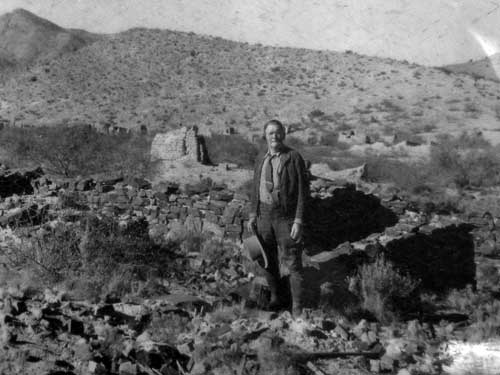
Neil visiting the ruins of Fort Bowie. He served here in 1886.
In 1917, Neil was assigned to Walnut Canyon National Monument, so his two daughters, Lillian and Hildegard, managed the ranch themselves (Ben had gone into the army). They began taking in weekend boarders and gradually expanded into a dude ranch, which were very popular in southern Arizona at the time.
In short, a dude ranch is a western cattle ranch converted to a vacation resort for tourists. The term 'dude' had changed greatly over the years. From the 1870's, it primarily meant a man who dressed in an extremely fashionable manner (a dandy), who paid particular importance to how he appeared... and made sure others did as well! Perhaps derived from the Scottish term for clothes, duddies, the use of the word dudde for clothing goes back as far back 1567. By the 1800's, the word was being used by cowboys to unfavorably refer to wealthy Easterners who came out west to experience the cowboy life (a city slicker)... people who simply dressed up for a part. And hence dude ranches, which catered to urbanites seeking more rural (but not TOO rural) experiences. In the 1960's, the term was taken up by the surfing culture, where it spread to today's use of informally addressing someone or refer to another person.

The ranch got its name from Lillian, who once said it was so "God-awful far away from everything."
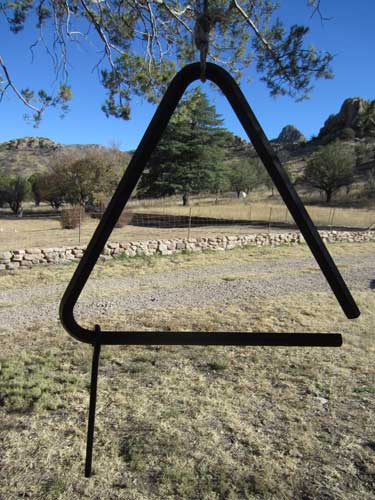
Hildegarde married and moved to California, so Lillian continued the ranch on her own. Lillian had known Ed Riggs from childhood since they both grew up in the area. He had married and had two children, but his wife died and he fell into depression and struggled with debt. He became reacquainted with Lillian and they married in 1923. The ranch catered to guests into the 1960's.
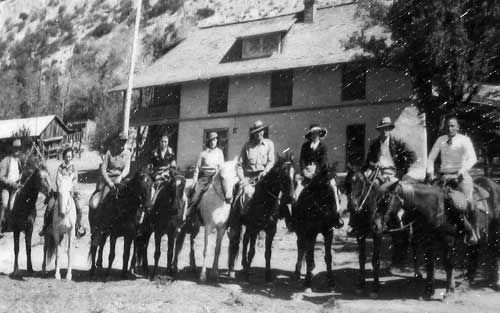
Horseback riding was a popular activity at the ranch, especially to see the fabulous rock formations. Circa 1933
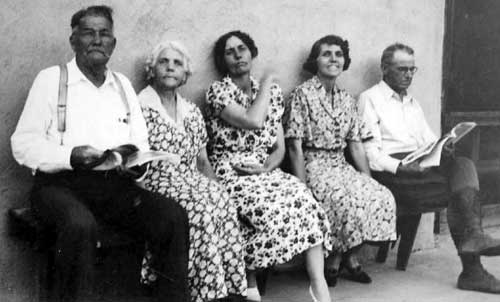
Niel & Emma Erickson, Hildegard, Lillian & Ed Riggs
Ed was born in 1885 in the Sulphur Springs Valley. His father had been the oldest of 11 children. Ed’s mother died when he was about 4 years old, so Ed and his brother were raised by their grandparents. His father married a second time in about 1895, but it was not a happy marriage. He then married Anna May Stafford (Ja Hu's second oldest daughter) in 1905.
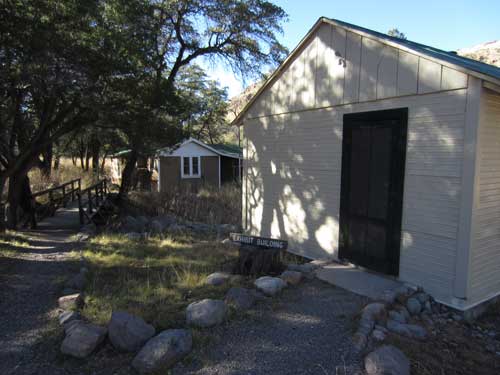
Other closed buildings

The old barn was at least open.
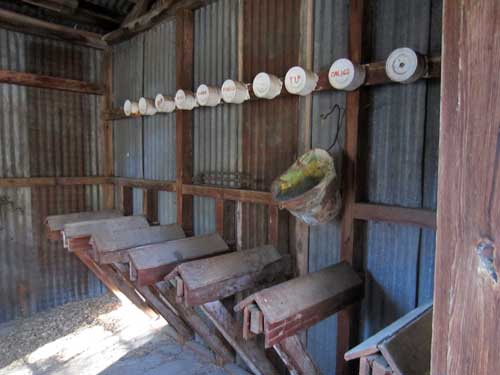
On the cans were painted the names of horses past... Red, Nixie, China, Pebbles, Tip, Calico.

The corral

A cattle ramp for loading the animals onto a truck

Prior to 1863, several people created forms of fencing that could be considered barbed wire, but they lacked the promotion to get it to the mass market. So credit generally falls to Lucien B. Smith who got the first patent in 1867. Shortly thereafter, other inventors patented similar products. Eventually there would be more than 1,500 different types of barbed wire. The motivation of an iron wire fence in the west was that generally timber was scarce and fires frequently sweep over them. But unlike the phrase "Good fences make good neighbors," fencing began a war between the farmers (who wanted to protect their crops from roaming livestock) and the ranchers (who engaged in long cattle drives wherever they wished).
Upon reaching the end of the trail, I turned and wandered slowly back.
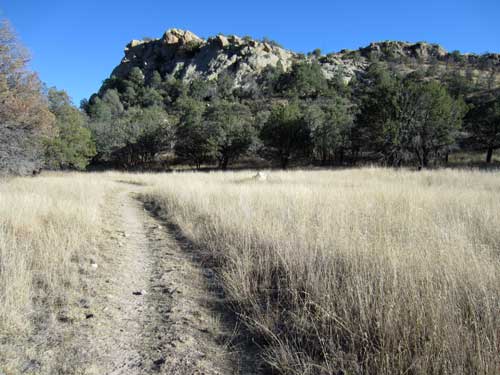

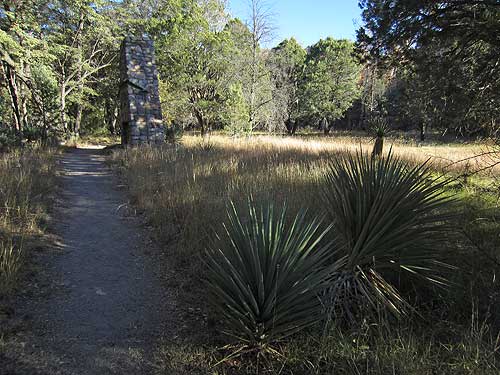



These meager butterfly wing, one pine squirrel and a few birds were all I saw on my excursion. No coatimundis. No javelinas.
We made another evening fire. The night was crisp but not cold. The campground also really filled up.
